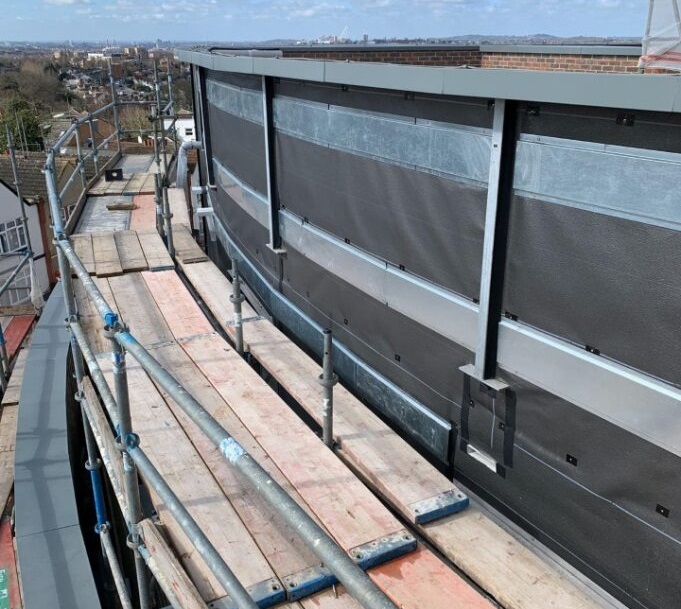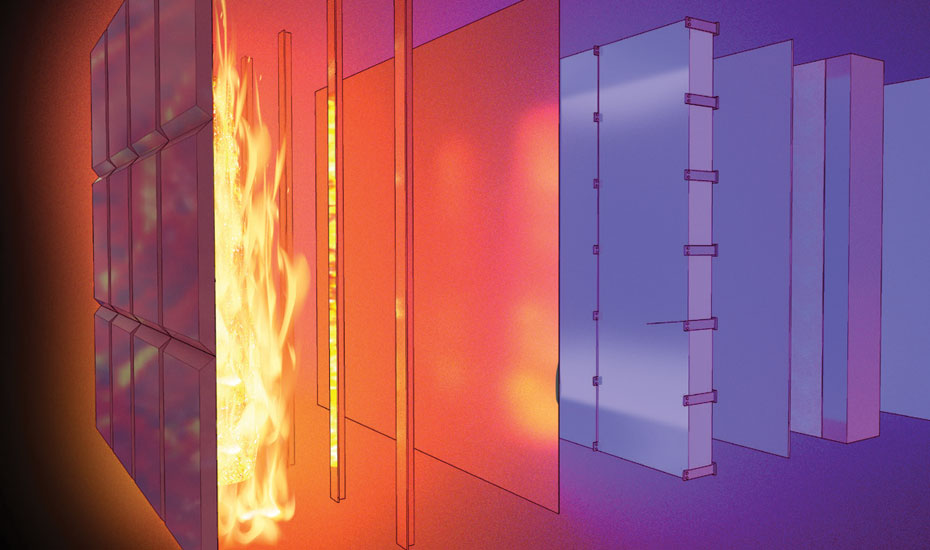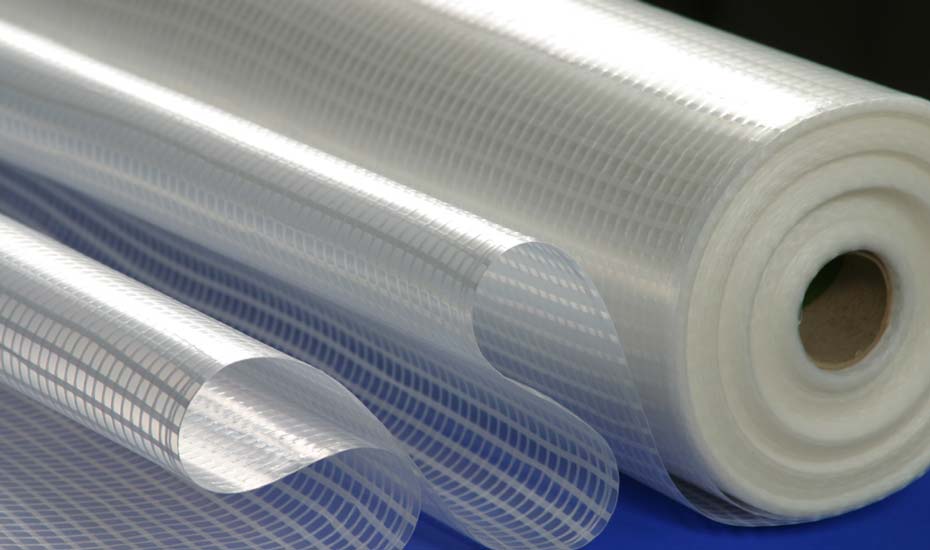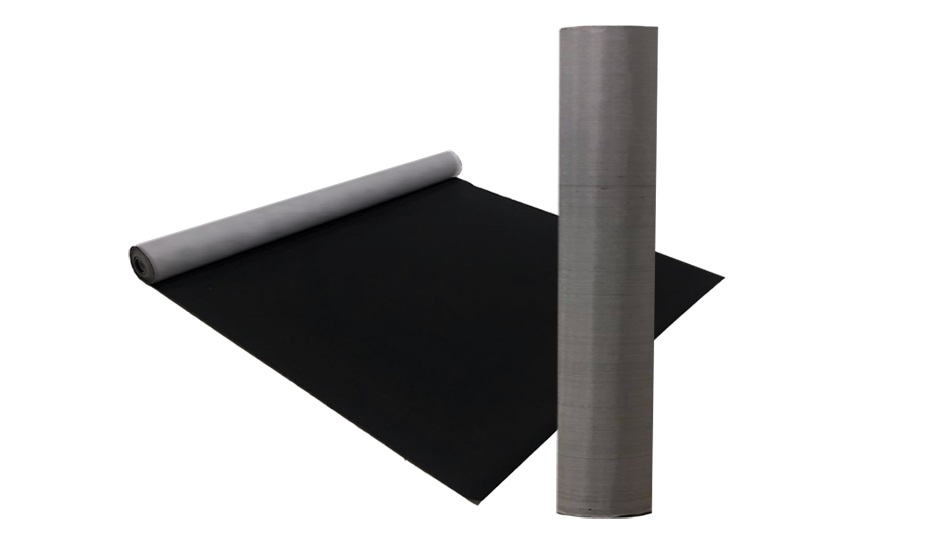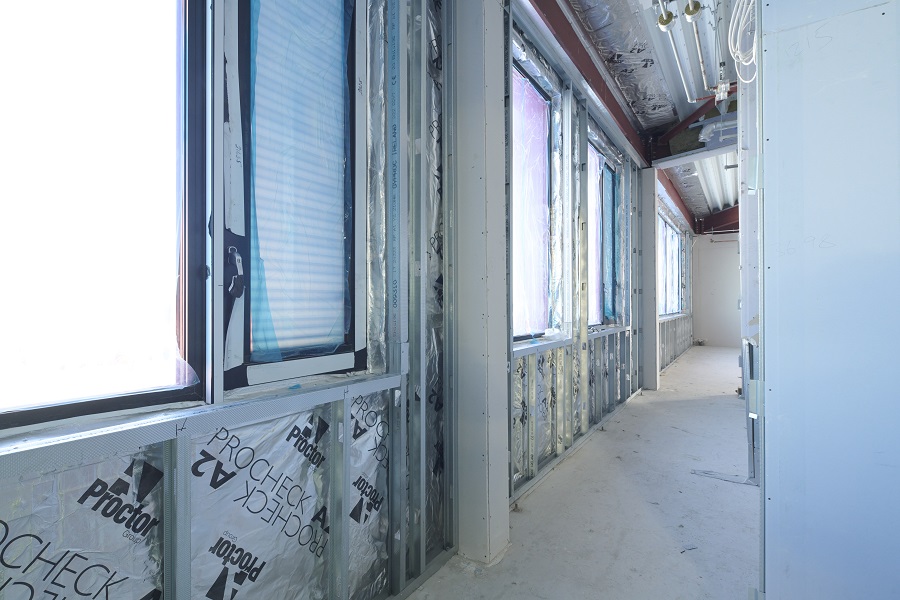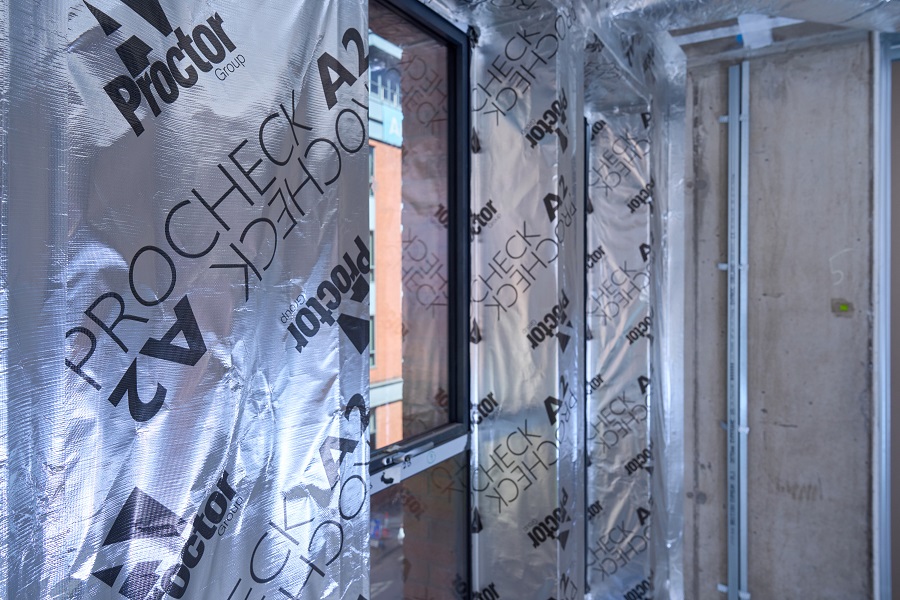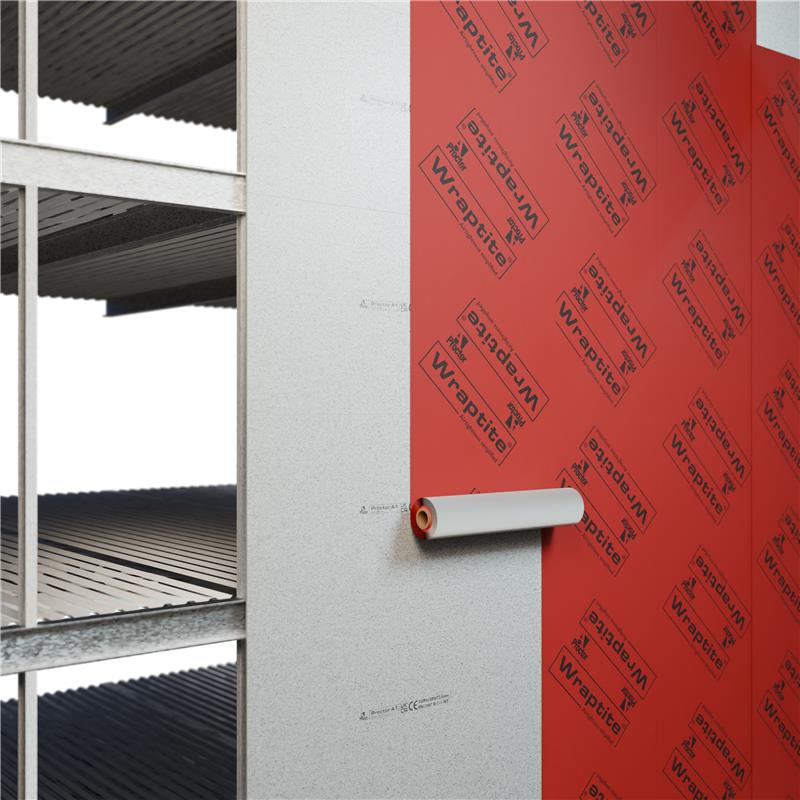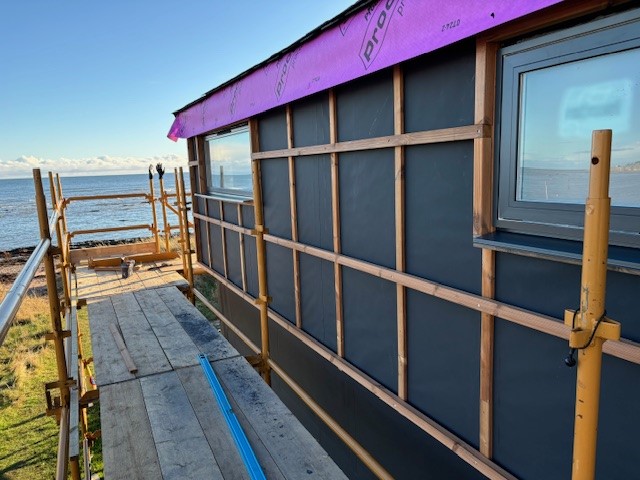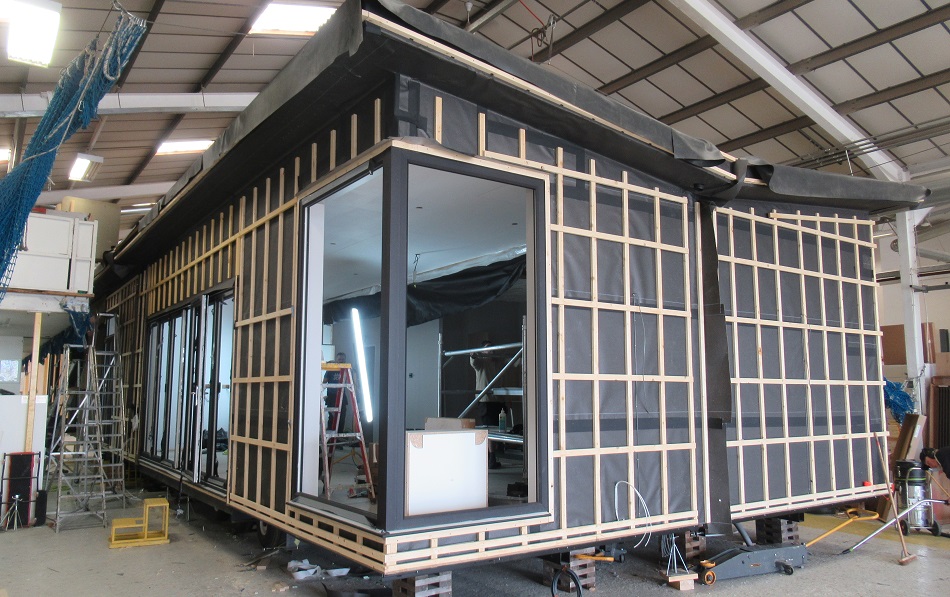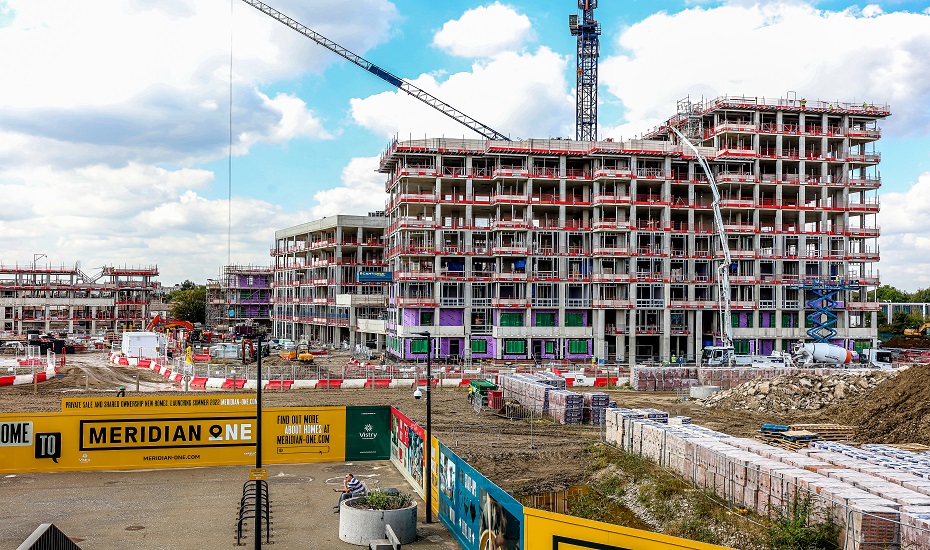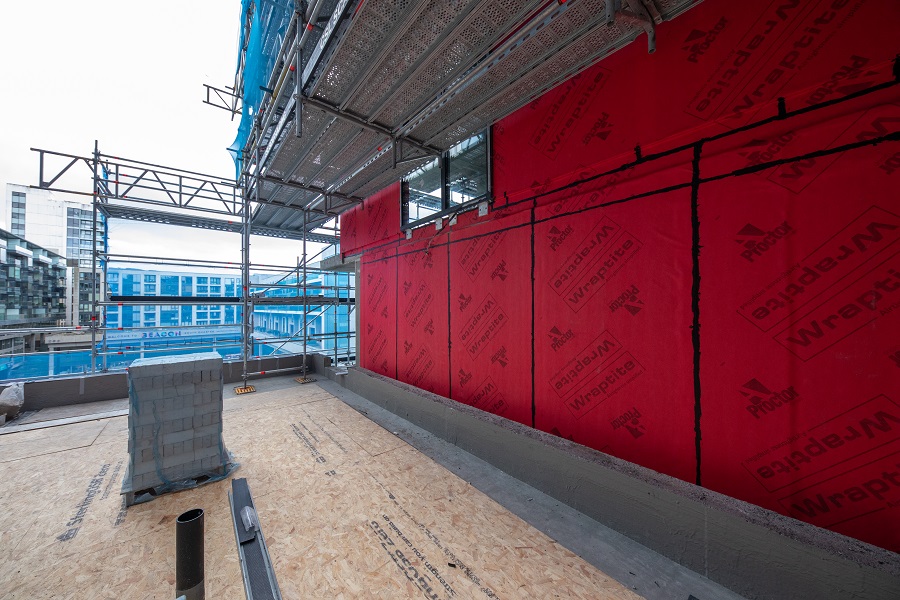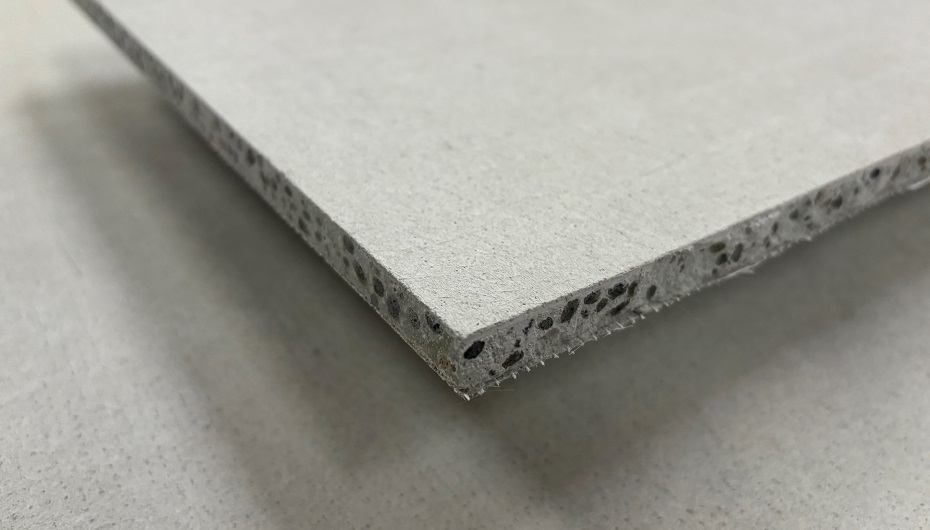The ability of certain products to meet the very highest standards of fire performance is limited by their primary function. Building membranes are one such product. The nature of the materials used to make a product – like our Wraptite membrane, for example – that offers airtightness and vapour permeability in a self-adhesive format, makes non-combustibility very difficult to achieve.
This delicate balancing act of performance characteristics was recognised in amendments to Approved Document B, with the inclusion of a list of components exempt from non-combustibility requirements in relevant buildings.
Nevertheless, there has been a level of expectation that manufacturers would work to offer equivalent products capable of achieving better levels of fire performance. A Proctor Group has offered membrane products with a fire performance declaration for many years, and we have expanded the range of options available in response to the industry’s changing requirements.
What Is Reaction to Fire Testing and Classification?
All of the membrane products we offer with fire safety performance have a reaction to fire declaration in accordance with BS EN 13501-1. Reaction to fire testing establishes the spread of flame behaviour of products when they are exposed to heat and fire, and how they contribute to a fire as they decompose due to that exposure.
Characteristics assessed include how easily the product ignites, whether it burns, and its calorific value. The tests required for the classification will consider different performance depending on the expected performance. For example, if you are only declaring a Class E you don’t need to carry out the same onerous levels of testing as you do if you wanted to declare A1.
Results from individual tests are then used to classify the product’s reaction to fire in accordance with EN 13501-1:2018 Fire classification of construction products and building elements. Classification using data from reaction to fire tests. From best performing to worst performing, a product can be classified A1, A2, B, C, D, E or F. Class F can also mean a product is untested.
A1 and A2 are non-combustible materials, while B classifies a material as very limited contribution to fire.
Many classifications except A1, E & F, include additional designations for production of smoke and flaming droplets. These designations appear as s1, s2 or s3, and d0, d1 or d2 respectively.
What Is Fire Resistance Testing and Classification?
Reaction to fire testing is helpful for assessing the contribution of an individual material or product to fire. What it cannot do is assess a complete system build-up featuring multiple components, which is where fire resistance testing comes in.
Fire resistance actually covers three different areas of performance: resistance to collapse (denoted as R and applying to loadbearing elements only); resistance to fire penetration (denoted as E, and also called integrity); and resistance to transfer of excessive heat (denoted as I, and known as insulation).
Construction elements may need to achieve performance in one, two or all three of these areas. That performance is declared in terms of a number of minutes, added after the relevant letters. For example, a classification may read REI 60, or E30.
Like reaction to fire testing, fire resistance testing results are classified in accordance with a particular standard – this time EN 13501-2:2023 Fire classification of construction products and building elements. Classification using data from fire resistance and/or smoke control tests, excluding ventilation services.
What Is a Membrane’s Fire Resistance in Minutes?
This is a common enquiry received by the A Proctor Group technical team, and it points to a fundamental misunderstanding of the two types of fire testing.
Our Procheck® FR200 and Fireshield® membranes both achieve Class B, s1-d0, while our Probreathe® A2, Probreathe® A2 Air and Procheck® A2 achieve Class A2, s1-d0. These classifications show that the products can help to resist the spread of flame, as their composition means they make limited contribution to fire or are non-combustible, respectively.
Alongside their composition, membranes are thin products and have inherently little calorific value. In the wider context of a whole building’s fire safety, a membrane’s role in a fire depends on what substrate they are installed over and how they are fixed. This can only be established through system testing to measure the fire resistance of a complete wall build-up.
What is behind a membrane has a marked impact on how a fire develops. A non-combustible thermal insulation material can actually cause heat build-up to intensify, while other materials (calcium silicate boards, or steel or aluminium components) can help to dissipate some heat.
In that context, does the membrane play its part – however limited that might be – in the full system performing as it needs to? Does it help the wall build-up to achieve the R, E and/or I classification required?
What Are the Risks with Product Substitutions?
Adhering a membrane can provide a complete ‘seal’ to the substrate, whereas mechanical fixing allows the possibility of air gaps behind the membrane. And where membrane laps are taped, how does the tape impact on performance?
At A Proctor Group, we test our fire performance membranes with taped overlaps to provide extra reassurance. Proposing a product substitution for an ‘equivalent’ membrane solution does not guarantee that the alternative has been tested in the same way. Modifying through-wall build-ups changes fire safety outcomes, and you can never expect a fire to behave as you ‘want’ it to.
Legislation now requires higher-risk projects to demonstrate decision-making about specifications throughout the design and construction process. While fire engineers can assess limited modifications to tested build-ups, culture change and strict insurance requirements are making it even more important that what is installed on site is what was specified in the first place.
A Proctor Group is happy to discuss any aspect of our membranes’ fire performance, and we routinely support customers carrying out their own full system tests.
Find out more at: https://proctorgroup.com/fire-solutions
Request a Sample
Technical Advice
CAD Detail Review
U-Value Calculation
Book a CPD
Specification Check
